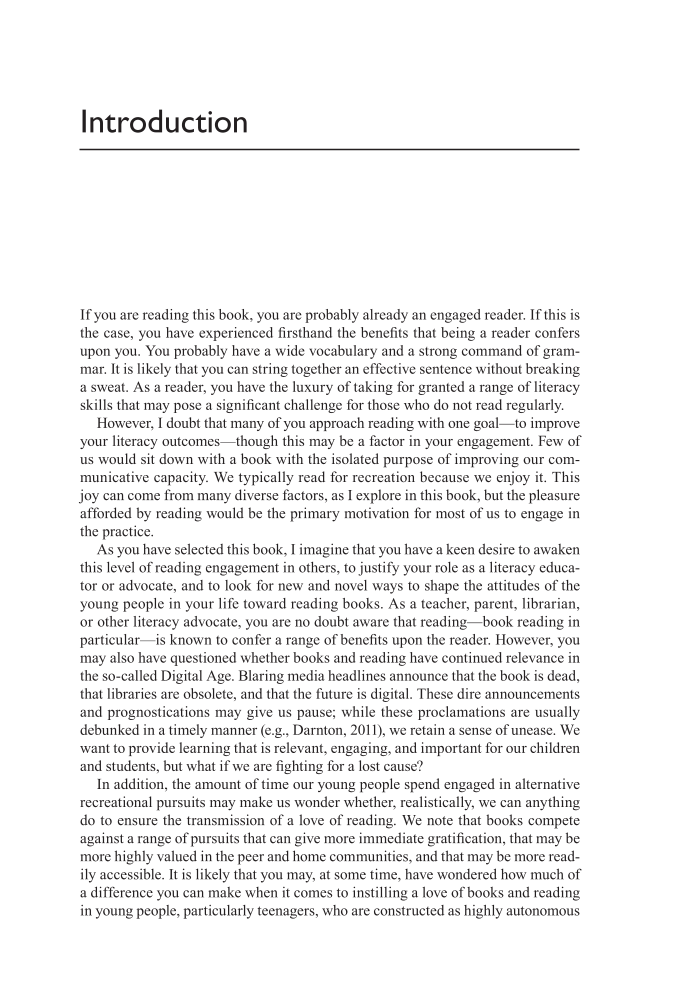Introduction If you are reading this book, you are probably already an engaged reader. If this is the case, you have experienced firsthand the benefits that being a reader confers upon you. You probably have a wide vocabulary and a strong command of gram- mar. It is likely that you can string together an effective sentence without breaking a sweat. As a reader, you have the luxury of taking for granted a range of literacy skills that may pose a significant challenge for those who do not read regularly. However, I doubt that many of you approach reading with one goal—to improve your literacy outcomes—though this may be a factor in your engagement. Few of us would sit down with a book with the isolated purpose of improving our com- municative capacity. We typically read for recreation because we enjoy it. This joy can come from many diverse factors, as I explore in this book, but the pleasure afforded by reading would be the primary motivation for most of us to engage in the practice. As you have selected this book, I imagine that you have a keen desire to awaken this level of reading engagement in others, to justify your role as a literacy educa- tor or advocate, and to look for new and novel ways to shape the attitudes of the young people in your life toward reading books. As a teacher, parent, librarian, or other literacy advocate, you are no doubt aware that reading—book reading in particular—is known to confer a range of benefits upon the reader. However, you may also have questioned whether books and reading have continued relevance in the so- called Digital Age. Blaring media headlines announce that the book is dead, that libraries are obsolete, and that the future is digital. These dire announcements and prognostications may give us pause while these proclamations are usually debunked in a timely manner (e.g., Darnton, 2011), we retain a sense of unease. We want to provide learning that is relevant, engaging, and important for our children and students, but what if we are fighting for a lost cause? In addition, the amount of time our young people spend engaged in alternative recreational pursuits may make us wonder whether, realistically, we can anything do to ensure the transmission of a love of reading. We note that books compete against a range of pursuits that can give more immediate gratification, that may be more highly valued in the peer and home communities, and that may be more read- ily accessible. It is likely that you may, at some time, have wondered how much of a difference you can make when it comes to instilling a love of books and reading in young people, particularly teenagers, who are constructed as highly autonomous
Document Details My Account Print multiple pages
Print
You have printed 0 times in the last 24 hours.
Your print count will reset on at .
You may print 0 more time(s) before then.
You may print a maximum of 0 pages at a time.

































































































































































































